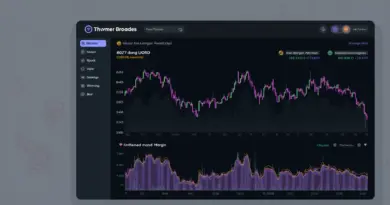What Is Crypto Investing? A Beginner’s Guide to Digital Wealth
Crypto investing has surged into mainstream finance, captivating both seasoned traders and curious newcomers. But what exactly does it entail? At its core, crypto investing involves allocating capital into digital assets like Bitcoin, Ethereum, or altcoins, aiming to profit from price appreciation or technological adoption. Unlike traditional markets, cryptocurrencies operate on decentralized blockchain networks, offering transparency, borderless transactions, and 24/7 trading. However, this nascent asset class demands a nuanced understanding of its risks, strategies, and evolving ecosystem.
The Dual Nature of Crypto: Opportunity vs. Volatility
Cryptocurrencies are often hailed for their high-growth potential. For instance, Bitcoin’s value surged by over 1,000% between 2019 and 2024, while Ethereum’s smart contract capabilities fueled innovations like decentralized finance (DeFi) and NFTs. Yet, this upside is tempered by extreme volatility. Bitcoin’s price dropped nearly 50% in 2022 during the “crypto winter,” triggered by events like the FTX collapse. Such swings underscore the importance of risk management—a theme echoed by the U.S. Government Accountability Office (GAO), which warns investors to “never allocate more than they can afford to lose”.
Building a Resilient Crypto Portfolio
Successful crypto investing hinges on strategic diversification and research. Experts recommend:
- Long-term holding (HODLing): Patience often rewards those who hold assets through market cycles. Bitcoin’s decade-long ascent from
0.003 to over60,000 exemplifies this. - Dollar-cost averaging (DCA): Regularly investing fixed amounts reduces exposure to short-term volatility.
- Asset allocation: Limiting any single crypto to 10-20% of your portfolio mitigates risk.
Projects with strong fundamentals—transparent teams, real-world use cases, and active communities—tend to outperform speculative tokens. For example, Ethereum’s shift to a proof-of-stake model in 2022 enhanced its sustainability and investor appeal.

Navigating Risks: Security, Regulation, and Psychology
The crypto landscape is fraught with unseen pitfalls:
- Security risks: Over $3 billion was lost to hacks and scams in 2023 alone. Cold wallets (offline storage) and two-factor authentication are non-negotiables for safeguarding assets.
- Regulatory uncertainty: MiCA regulations in Europe aim to standardize crypto oversight, while countries like China ban crypto trading entirely. Investors must stay abreast of policy shifts to avoid legal pitfalls.
- Emotional discipline: Fear of missing out (FOMO) and panic selling derail even the best strategies. As Pavel Matveev, CEO of Wirex, notes: “Decentralized systems reward logic over impulse”.
The Future of Crypto: Institutional Adoption and Innovation
Institutional players like Tesla and MicroStrategy now allocate portions of their treasuries to Bitcoin, signaling growing mainstream acceptance. Meanwhile, blockchain advancements—such as AI-driven tokens and zero-knowledge proofs—promise to expand crypto’s utility beyond mere speculation. However, analysts caution that widespread adoption hinges on resolving scalability issues and enhancing user education.
Conclusion: Balancing Ambition With Prudence
Crypto investing isn’t a gamble—it’s a calculated journey. By blending research, diversification, and emotional resilience, investors can harness the sector’s disruptive potential while sidestepping its hazards. As the GAO emphasizes: “Informed decisions stem from continuous learning and adaptive strategies”.
Thedailyinvestors
About the Author
Jane Carter is a fintech analyst specializing in blockchain and digital asset markets. With a decade of experience in financial risk management, she has contributed to industry reports and advised institutional investors on crypto portfolio strategies. Her work emphasizes bridging the gap between technological innovation and regulatory compliance.
This article synthesizes insights from regulatory bodies, market data, and expert analyses to deliver a balanced perspective on crypto investing. By addressing both the allure and the risks, it equips readers with the tools to navigate this dynamic frontier.






